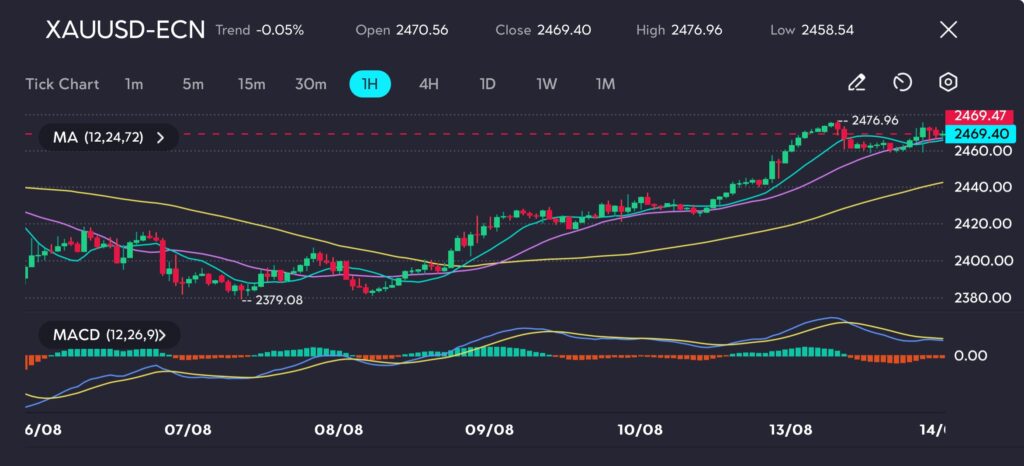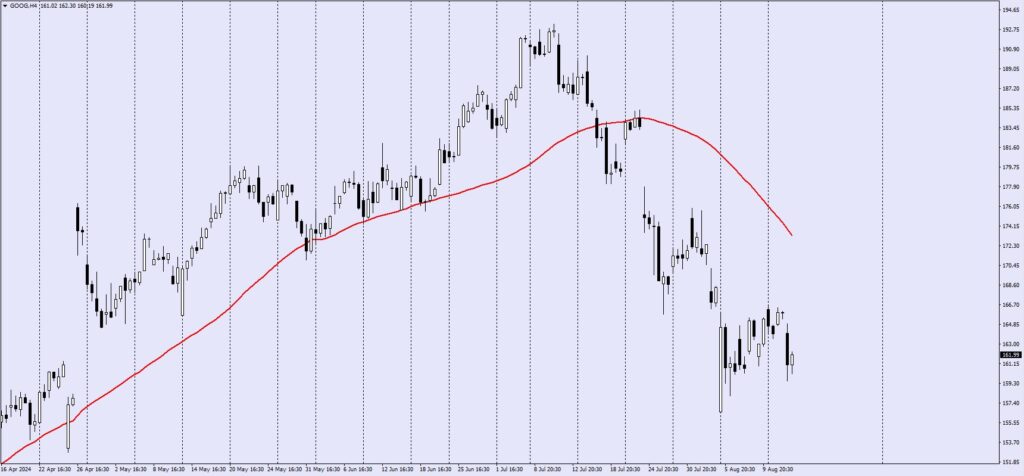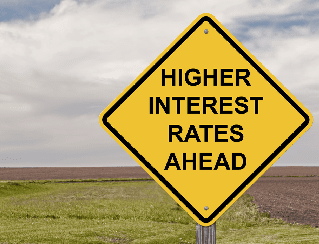US stocks declined on Monday, as a realization that interest rates are likely to remain elevated for an extended period continued to force a repricing across assets. Powell’s speech during the Jackson Hole symposium underscored that expectations for any reversal of Fed tightening next year were unlikely unless inflation reverted toward the central bank’s long-term target. The latest consumer price reading in the US put inflation above 8%, which is far away from the target, of 2%. Fed chairs also warned of the potential for economic pain for households and businesses as the central bank continues to be aggressive.

The benchmarks, both S&P500 and Dow Jones Industrial Average slid a second day, adding to the rout that started Friday when Jerome Powell made it clear the Fed is willing to let the economy suffer as it fights inflation. Nine out of eleven sectors in the S&P500 stayed in negative territory, as Information Technology got the worst performance among all groups, dropping 1.28% for the day. While the Energy sector surged with a 1.54% gain on daily basis. The Nasdaq 100 fell 1%, Dow Jones Industrial Average slipped 0.6%, and the MSCI world index fell 2.3% on Monday.

Main Pairs Movement:
The US dollar was little changed down on Monday. The DXY index extended upbeat tractions lifted by Federal Reserve Chair Jerome Powell’s hawkish comments and refreshed a 20-year high level above 109.4 in the first half of Monday. Then, as the expectations for the England Central Bank rate hiked, the US greenback was kept in check and dropped to a level below 108.6 during the UK trading session.
The GBP/USD declined with a 0.30% loss daily for the day, as investors are awaiting ISM’s national manufacturing reading and US Nonfarm Payroll for August, which are released on Thursday and Friday respectively. The cables extended bearish momentum caused by Powell’s hawkish comment and fell to a level below 1.166, then rebounded to a daily high level above 1.174. Meanwhile, EUR/USD surged to a nearly 1.003 level as ECB rate hiking expectations. The pair advanced by 0.31% on Monday.
The gold was little changed down for the day, as market participants reflected on the Jackson Hole symposium. XAU/USD plunged to a level below $1,722 marks at the beginning of the Asia trading session, then witnessed fresh transactions during the middle of the UK trading session and touched a daily high above $1,745 marks. The yellow metal is going to brace for the period of high volatility, with incoming data that could reignite fears of a worldwide recession.
EUR/USD (4-Hour Chart)

The EUR/USD pair rebounded on Monday, staging a goodish recovery and climbed toward the 1.002 level heading into the US session despite the risk-averse market environment today. The pair is now trading at 0.9989, posting a 0.25% gain daily. EUR/USD stays in the positive territory amid the pullback witnessed in the US dollar, as some profit-taking on the first day of the week has dragged the US dollar down from a fresh 20-year peak near the 109.5 mark. However, the rising bets for a more aggressive policy tightening by the Fed should limit the losses for the greenback, as the hawkish remarks by Fed Chair Jerome Powell, last Friday has reaffirmed a 75 bps Fed rate hike in the September meeting. For the Euro, the hawkish comments from the European Central Bank (ECB) policymakers at Jackson Hole have provided some support to the shared currency.
For the technical aspect, the RSI indicator is 52 as of writing, suggesting that the pair is losing its bullish strength as the RSI started to decline toward 50. As for the Bollinger Bands, the price failed to preserve its upside traction and witnessed some selling, therefore a continuation of a downside trend can be expected. In conclusion, we think the market will be slightly bearish as long as the 1.0007 resistance line holds. But a break above that level could favour the bulls and confirm the bullish bias in the near term.
Resistance: 1.0007, 1.0033, 1.0089
Support: 0.9961, 0.9917
GBP/USD (4-Hour Chart)

The GBP/USD pair edged lower on Monday, failing to extend its rebound and retreated to the 1.171 level to surrender most of its daily gains amid the negative shift witnessed in risk sentiment in the second half of the day. At the time of writing, the cable stays in negative territory with a 0.20% loss for the day. The further rise in the US Treasury bond yields and aggressive Fed rate hike bets both acted as a tailwind for the safe-haven greenback and exerted bearish pressure on the GBP/USD pair. Markets are currently pricing in a greater chance of a 75 bps Fed rate hike in the September meeting. For the British pound, the UK markets will remain closed due to the Summer Bank Holiday on Monday, causing the absence of any fundamental catalyst for the cable.
For the technical aspect, the RSI indicator is 40 as of writing, suggesting that the downside is more favoured as the RSI stays below the mid-line. As for the Bollinger Bands, the price regained upside traction and climbed toward the moving average, therefore the bullish momentum should persist. In conclusion, we think the market will be slightly bullish as long as the 1.1655 support line holds. On the upside, the pair could shake off the bearish pressure and make an upward correction if it breaks above the 1.1775 resistance.
Resistance: 1.1775, 1.1830, 1.1854
Support: 1.1655
XAU/USD (4-Hour Chart)

Gold remains under pressure for the second day on Monday and drops to over a one-month low, around the $1,720 level during the early part of the European session. After that, gold catches some upside traction and recovers from a one-month low. The price reversed an intraday dip and surged to the $1,740 level in the US session.
Besides the hawkish comments from Fed Chair Jerome Powell last Friday, it should be noted that The European Central Bank is prepared to at least repeat the half-point increase in interest rates it delivered last month, with an even bigger move not to be excluded, which is the message from ECB officials who joined the Federal Reserve’s annual Jackson Hole symposium. Gold investors should notice that gold prices may brace for a period of high volatility as the worldwide central bank’s hawkish policy.
For the technical aspect, the RSI indicator is 44 as of writing, below the midline, suggesting that the price remains in bearish mode. As for the Bollinger Bands, the gold price hovers between the moving average and lower bound. Besides moving average is slightly downward as of writing. Therefore, downward traction could be expected. In conclusion, we think the market is still under bearish pressure as the price closed a lower low at $1,720 level on the 4H chart and technical analysis favours bearish momentum as well.
Resistance: 1765, 1783, 1803
Support: 1714, 1680
Economic Data
| Currency | Data | Time (GMT + 8) | Forecast |
| USD | CB Consumer Confidence (Aug) | 22:00 | 97.9 |
| USD | JOLTs Job Openings (Jul) | 22:00 | 10.475M |









































